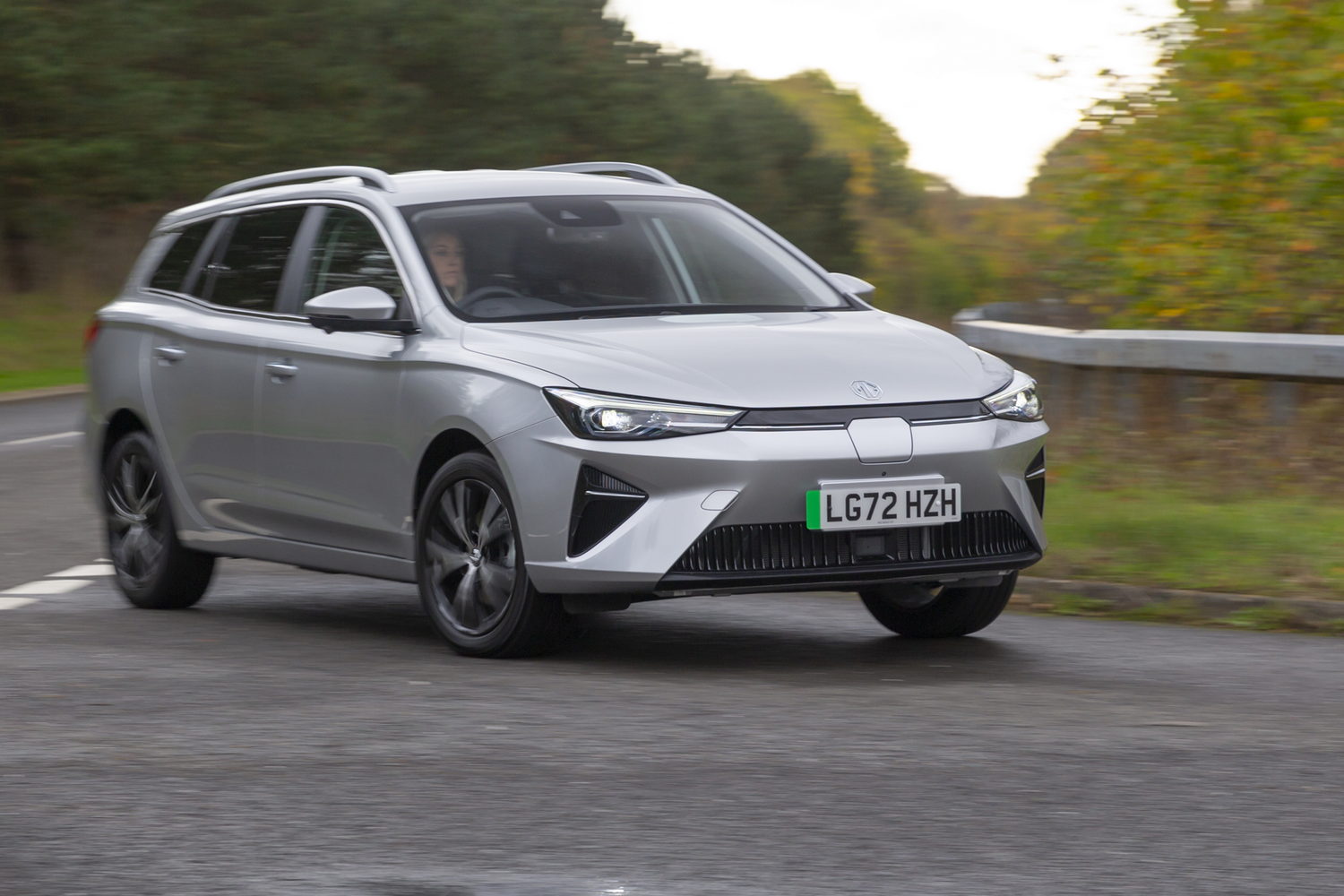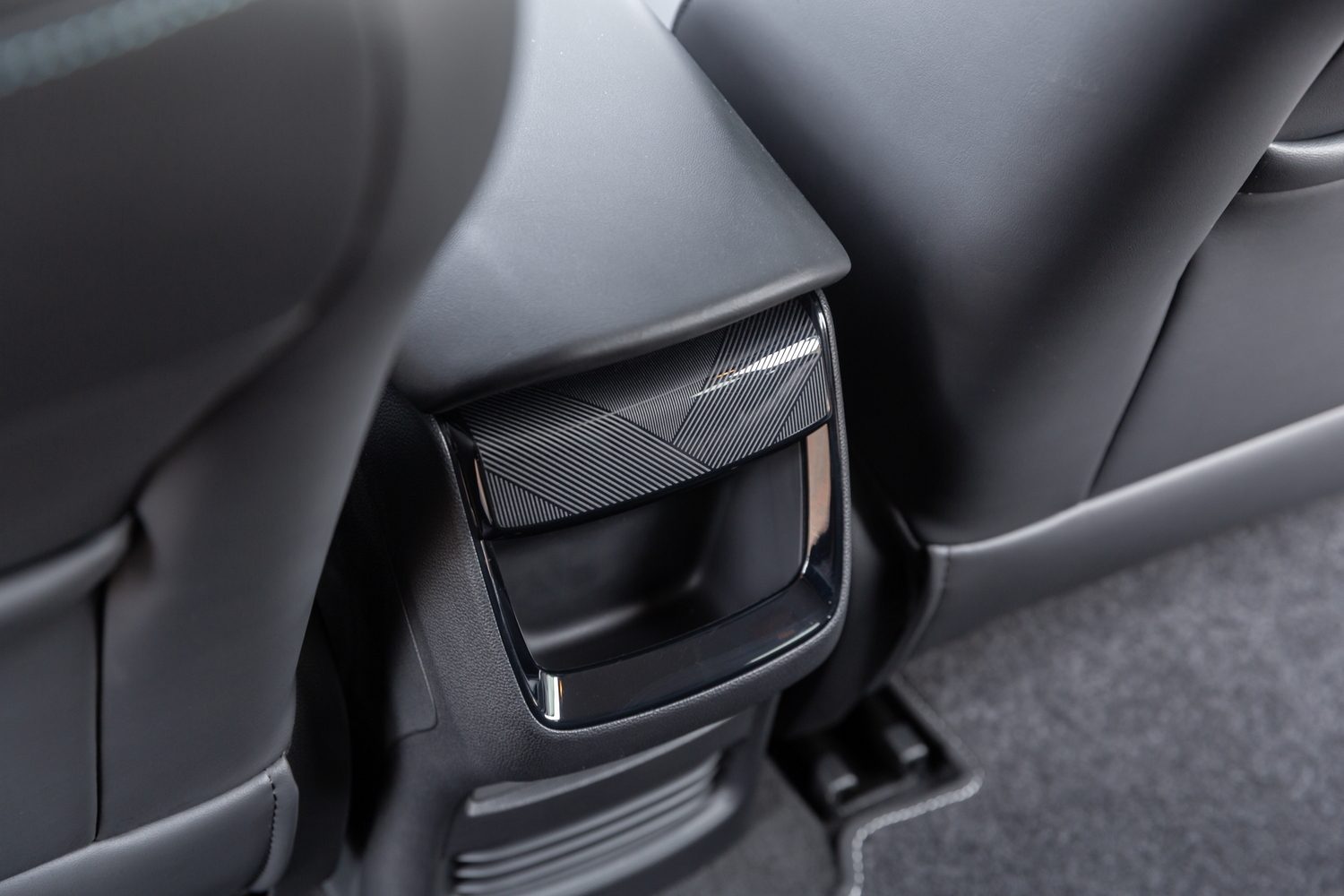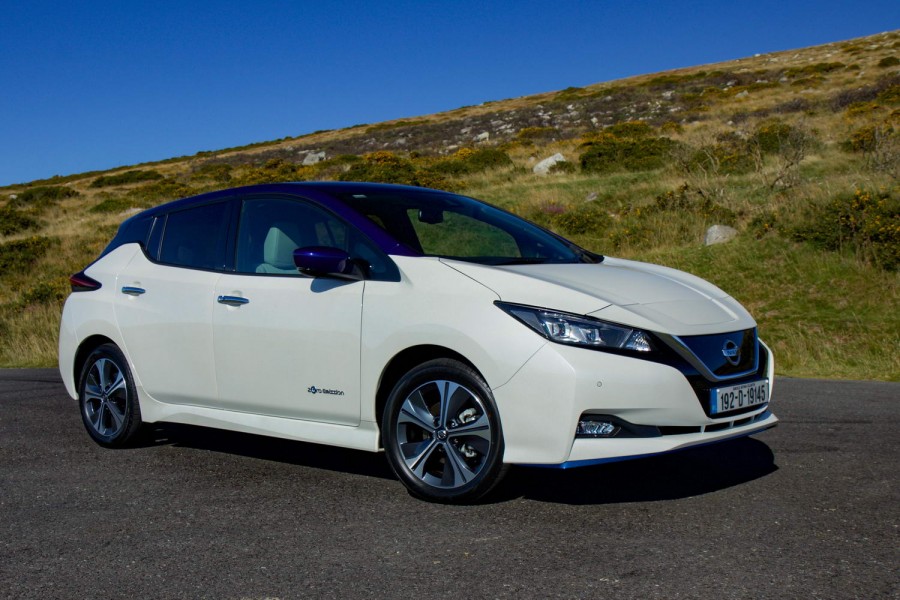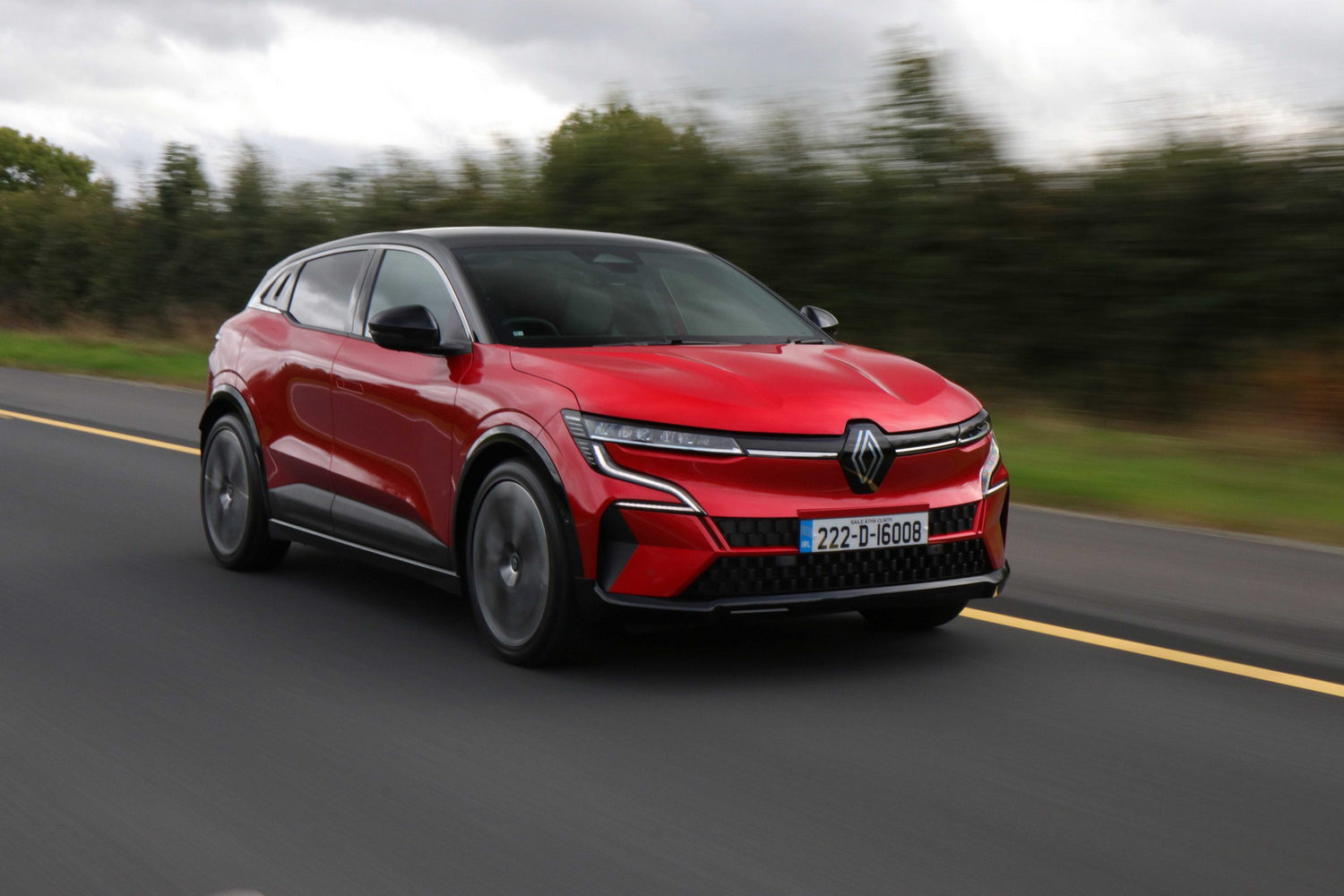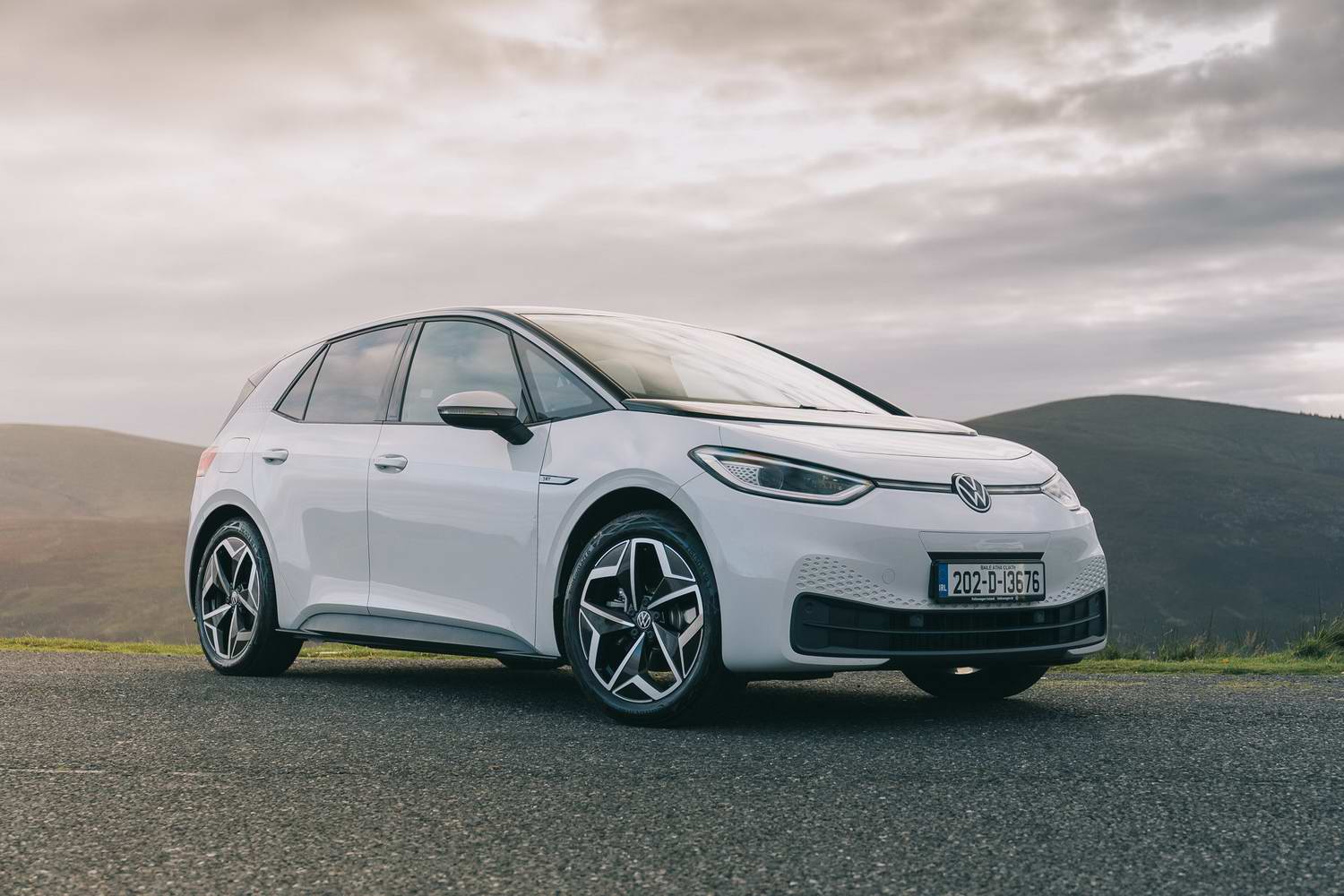The MG5 has been something of a revelation for the reinvented MG brand. One of only three electric estates on the market (the other two being versions of the Porsche Taycan), it's a bit of a unicorn, and it has enjoyed plentiful success as a result. But the time for change is upon us, and although the electric powertrain is unchanged, MG has given the car a more modern design and a revamped interior.
In the metal
MG has been busy redesigning the new MG5's exterior and the new car looks far more modern than its predecessor, despite retaining the same basic body shape and dimensions.
However, MG has binned the 5's old grille-esque front panel, replacing it with a more modern, more angular nose. That front end also incorporates the charging port, which lives behind a flap below the badge. New lights have been fitted at the front and rear, too, while there are new bumpers lower down and roof rails are now fitted as standard across the range. Overall, we see shades of the Toyota bZ4X and the Hyundai Ioniq 5, but there's nothing wrong with that. It looks much more modern than it did, that's for sure.
Because the MG5's dimensions have been left unaltered, the car is no more practical than before, but it's no less spacious either. There's still adequate seating for four and a useful 479-litre boot, which should keep most owners happy. And if you really need more space, you can always fold down the back seats to free up more than 1,300 litres of carrying capacity.
But just because the vital stats are unchanged doesn't mean MG has done nothing to the car's cabin. The dashboard has been completely redesigned, borrowing from the brilliant new MG4 hatchback to great effect. Like the smaller, cheaper MG4, the MG5 now has a 10.25-inch touchscreen and a digital instrument display, while there's also a new centre console to house the rotary gear selector.
In some ways, the cabin isn't especially inspiring - there isn't much in the way of unique design features, save for some questionable blue trim, and the materials aren't particularly premium - but it's solidly made and it's functional. And the new technology is a vast improvement on what's gone before, proving to be both better looking and easier to use than the system fitted to the old MG5. It isn't perfect, tripping over occasionally when you tap the screen, but it's generally easier to use than before and it does everything most owners will demand from it. The same goes for the digital instrument display, which is hardly the most up-to-date system on the market, but it does the job despite its slightly old-school graphics.
While the touchscreen will grab all the attention, the real story is the other fresh tech that's fitted as standard. Even the cheapest model in the MG5 range, for example, will come with the brand's iSmart technology, allowing drivers to access vehicle data such as charging information via a smartphone app. Vehicle-to-load (V2L) technology is also included across the range, allowing drivers to use the car's battery to power anything with a three-pin plug. Laptops, coffee machines and phone chargers can all take power straight from the car.
Driving it
While the MG5 might have changed substantially on the surface, the underpinnings have remained more or less the same. The 61kWh battery is the same as before and there's still a 115kW electric motor powering the front wheels. The result is a surprisingly quick estate car, with a 0-100km/h time of just under eight seconds when you engage the Sport mode.
For most buyers, however, the MG5 is all about efficiency and running costs. Although MG hasn't made any great strides in this area, it didn't really need to. The battery is, according to the official economy test, good for about 400km on a single charge - assuming you go for the basic Excite model. Choose the Exclusive, with its larger wheels, and the range drops to 379km. Either way, the MG has similar range to the top-end Nissan Leaf. However, as is so often the case with electric cars, we found that official range figure slightly optimistic over a mixture of roads. While you might manage 400km between charges if you stick to city centres and use the climate control sparingly, a long motorway journey will increase electrical consumption to the point where 300km looks like an outright maximum.
Even so, that's a useful range for most drivers, and the MG5 comes with an 87kW on-board charging system that allows it to charge from 10 to 80 per cent in as little as 35 minutes, assuming you can find a suitable rapid charger. Taking the battery from 10 to 100 per cent using a 7kW domestic 'wallbox' charging point, on the other hand, takes 10 hours.
Because so little has changed mechanically, the new MG5 feels much the same as its predecessor, which means it offers an agreeable, if not especially remarkable, driving experience. The electric motor is predictably quiet, and the ride is composed, even if the suspension is occasionally caught out by potholes.
To some extent, the car's behaviour is controlled by the drive mode selection switch on the centre console, which allows the driver to cycle through Eco, Comfort and Sport settings. As the name suggests, Eco mode is designed to be the most efficient, suppressing response to accelerator pedal inputs, while Sport mode provides increased responsiveness. Comfort is a halfway house between the two.
Not only do the driving modes tweak the way the motor responds to inputs, but they also alter the steering slightly. Opting for Sport mode adds some artificial weight to the wheel, while the Comfort mode makes it much lighter. No matter what you do with the modes, it'll never provide much feedback, but the extra weight of Sport mode does instil a little more confidence. But while handling is not the MG5's forte, it isn't without its plus points. Grip levels are adequate, the body doesn't lean too much and response to steering inputs is reasonably sharp, although the body does lurch around a bit during sharp changes of direction.
Driving modes aren't the only way of tweaking the car's behaviour, either. By using the switch labelled KERS (it stands for kinetic energy recovery system) you can increase or decrease the regenerative braking that harvests energy when the car is slowing down. It isn't the most aggressive system we've sampled - even in its most forceful form - but with a little planning you can use it to minimise the time you spend braking and thereby save some battery power. It's at its most useful, therefore, around town.
What you get for your money
Value has been key to the MG5's appeal since its inception, and the new model is set to follow suit. At a starting price of €34,645, it costs about €7,000 more than the MG4, but it's more spacious. Compared with the likes of the Volkswagen ID.3, on the other hand, it's almost suspiciously cheap, as though there should be something you don't get. But aside from the VW badge, that isn't the case.
The basic Excite model comes with bags of standard equipment, including LED headlights, alloy wheels and a reversing camera. The Apple CarPlay and Android Auto smartphone integration tech comes as standard too, while there's vehicle-to-load (V2L) functionality allowing other devices to be charged and powered from the car's battery. Moving up to the top-end Exclusive car gets you rear privacy glass, leather-effect upholstery and slightly larger alloy wheels, as well as heated front seats, automatic climate control and an electrically adjustable driving seat. All for €37,895.
Summary
Buyers who liked the old MG5 will be pleased to know the updated version offers more of the same. There's plenty of space and a reasonable range, and it's still exceptionally good value. Whether you approve of the fresh look will be a matter of taste, but there's no arguing with the improved technology. MG was already on to a winner with the 5, and the updated version is only going to increase the number of buyers beating a path to MG showroom doors.

